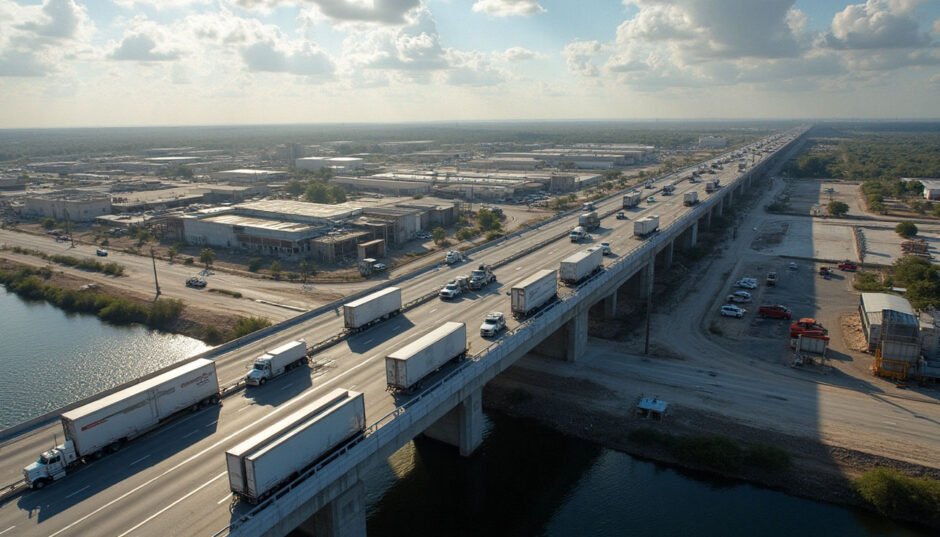A federal judge ordered the Trump administration to immediately resettle approximately 12,000 refugees into the United States recently. The administration argued they should only process 160 refugees into the country. U.S. District Judge Jamal Whitehead, President Joe Biden’s 2023 appointee, issued the decisive ruling.
The government must “process, admit, and provide statutorily mandated resettlement support services” to these refugees according to the order. The 9th Circuit Court of Appeals has limited Judge Whitehead’s earlier decision but still maintains that refugees with “arranged and confirmable” travel plans must be processed. This case revolves around the 43-year-old refugee program that Congress created to manage people’s resettlement who were displaced by war, natural disaster, or persecution.
Judge Orders Trump Administration to Admit 12,000 Refugees
U.S. District Judge Jamal Whitehead firmly rejected the Trump administration’s narrow interpretation of a federal appeals court ruling on May 5. The judge ordered the government to admit roughly 12,000 refugees who had received approval for resettlement before January 20, 2025. The Justice Department and refugee resettlement agencies engaged in heated legal arguments over the Ninth Circuit Court’s previous decision interpretation.
The administration managed to keep its position that it should process only about 160 refugees who had travel plans within two weeks of January 20. Notwithstanding that, Judge Whitehead dismissed this analysis. He stated it needed “not just reading between the lines, but hallucinating new text that simply is not there”.
“This Court will not entertain the Government’s result-oriented rewriting of a judicial order that clearly says what it says,” Whitehead wrote in his order. He described the government’s interpretation as “interpretive jiggery-pokery of the highest order”.
The court’s ruling stated that refugees qualify for admission under three specific conditions:
- Had an approved refugee application authorizing U.S. Customs and Border Protection admission within four months of approval
- Had been cleared for entry by U.S. Citizenship and Immigration Services
- Had arranged and confirmable travel plans to the United States before the executive order
The judge created a strict compliance framework with deadlines. The federal government must start processing qualifying refugees within seven days. It also must restore resettlement services within 21 days, including housing, transportation, and monetary assistance for affected refugees.
The government must meet with plaintiffs to agree on a course of action if feasibility concerns arise. The judge stated he would issue another order approving or denying changes if both sides fail to reach an agreement on amendments.
“The Government’s obligation to process, admit, and provide statutorily mandated resettlement support services to the Injunction-Protected Refugees is immediate,” the order emphasized.
Court Rejects Government’s Narrow Interpretation of Appeals Ruling
Judge Whitehead really tore apart the government’s restrictive interpretation of the appeals court ruling. Legal experts pointed out that the administration tried something extraordinary – redefining clear judicial language.
The Justice Department lawyers managed to keep arguing that only refugees with immediate travel plans should get in. Their interpretation would have cut down eligible refugees from 12,000 to just 160. They claimed the Ninth Circuit’s words about “arranged and confirmable” travel plans meant something much narrower.
The judge’s criticism came down hard. He called the government’s stance “interpretive jiggery-pokery” that needed “hallucinating new text” instead of reading what was actually written. The court found that the government considered misrepresenting the appeals court’s goal to protect already vetted and approved refugees.
Whitehead’s 18-page decision explained why the administration’s interpretation went against both what the appeals court said and meant. The judge made it clear that the court had already set three specific conditions to qualify, and none included the government’s two-week travel window rule.
The judge looked at basic principles of how courts interpret laws. He pointed out that if the appeals court wanted such narrow rules, they would have said so clearly. The appeals court had instead protected all refugees with “arranged and confirmable” travel plans without any time limits.
The ruling made it clear – all refugees who passed the three-part test must be allowed in, whatever their travel timeline was before the executive order. This firm rejection blocked all ways the administration tried to find to minimize following the rules.
Government Faces Compliance Deadline and Legal Pressure
The federal government must meet a strict May 12 deadline to comply with Judge Whitehead’s decisive ruling. The original deadline requires action in three areas: refugee processing must restart, travel-ready refugees need assistance, and expired travel clearances since January need renewal.
Judge Whitehead created these strict requirements because the Trump administration repeatedly refused to follow previous preliminary injunctions. The judge’s order clearly outlines what the government needs to do.
“The Government’s obligation to process, admit, and provide statutorily mandated resettlement support services to the Injunction-Protected Refugees is immediate,” states the court order. The ruling also demands quick restoration of funding, information, and operational support to U.S. Refugee Admissions Program partners.
HIAS President Mark Hetfield voiced the frustration of refugee resettlement organizations. “Despite multiple court orders, the U.S. government has thus far done next to nothing to resume resettlement for vulnerable refugees who were already approved to travel to the United States,” he noted.
Legal tensions grew after the government tried to undermine the court’s preliminary injunction by sending termination notices to resettlement agencies. The administration told agencies on April 2 they would get their cooperative agreements back, but then immediately suspended them.
Legal experts emphasize that refugee families face increasing risks with each day of delayed resettlement. The delays have weakened the program’s strong infrastructure and mutually beneficial alliances.
Government attorneys admitted in earlier hearings that helping 12,000 refugees would be challenging. Representatives from the International Refugee Assistance Project responded that working with resettlement partners would make the process much easier.
Conclusion
The federal court ruled against the Trump administration, delivering one of the most important legal rebukes to attempts that limit refugee admissions. Judge Whitehead rejected the government’s restrictive interpretation that would have cut eligible refugees from 12,000 to just 160. The administration must comply with strict deadlines starting May 12. This case affects thousands of vulnerable refugees who completed extensive vetting processes and received resettlement approval.
The judge called the government’s position “interpretive jiggery-pokery,” which shows officials misrepresented the appeals court’s intent. This ruling clearly states that refugees who meet the three-part qualification test must be admitted, whatever arbitrary timeframes exist. Refugee resettlement organizations continue to push for quick implementation after what they call systematic attempts to dismantle their 43-year-old infrastructure.
The government faces multiple compliance challenges. They must restart refugee processing, help eligible people travel, and renew expired authorizations. The court ordered immediate restoration of funding and operational support to program partners. Legal tensions between judicial mandates and administrative resistance make the final outcome unclear. In spite of that, this ruling reinforces the judiciary’s role in protecting the refugee program that Congress created in 1980 to shelter those displaced by war, natural disaster, or persecution.
FAQs
Q1. What is the significance of the federal judge’s recent ruling on refugee admissions? The federal judge ordered the Trump administration to admit approximately 12,000 refugees who had been previously approved for resettlement, rejecting the government’s narrow interpretation that would have limited admissions to only 160 refugees.
Q2. What conditions must refugees meet to qualify for admission under this ruling? Refugees must have had an approved application authorizing admission within four months, been cleared for entry by U.S. Citizenship and Immigration Services, and had arranged and confirmable travel plans to the United States before the executive order.
Q3. How has the government responded to the court’s order? The government initially argued for a more limited interpretation of the ruling, but the judge rejected this approach. The administration now faces strict compliance deadlines to restart refugee processing and provide necessary support services.
Q4. What challenges do refugee resettlement organizations face in light of this ruling? Resettlement organizations have expressed frustration with the administration’s actions, citing delays in resuming resettlement and attempts to dismantle established infrastructure. They are now pressing for swift implementation of the court’s order.
Q5. Can refugee status be revoked once granted in the United States? Yes, refugee status can be revoked if it is determined that the individual was not a refugee within the meaning of the law at the time of admission. However, those granted asylum are generally allowed to remain in the country without fear of deportation.










